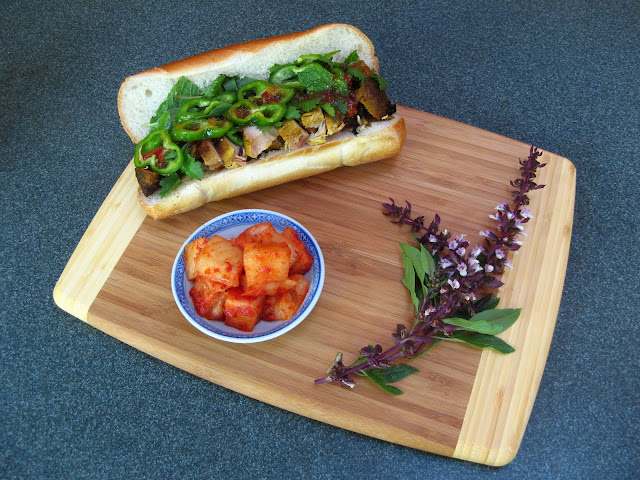This recipe was updated on 07 Oct 2015. Some instructions
and ingredient quantities were changed, and metric measurements added.
This is a classic easy to prepare dish. I happen to have
chicken available, but you can use whatever is in your refrigerator to stir fry
with the asparagus and straw mushrooms. The salted black beans (also called
fermented black beans) and garlic give the dish its distinctive taste. If you
don’t have salted black beans, use a prepared black bean garlic sauce available
in a jar at your local Asian market (my favorite brand is Lee Kum Kee).
The root end of the asparagus has a tough skin. The usual
advice is to take the root end of the asparagus in one hand and the tip end
with the other, snap the asparagus (it breaks at the natural tough-tender skin
boundary), and discard the root end and use the tip end. However that results
in a lot of waste (in my opinion) since the center of the root end is still
tender and edible, it’s just the skin that’s tough. So I’ve found that if you
use a vegetable peeler, you can remove the tough outer skin and use the entire asparagus
stalk. It takes some practice to just remove the asparagus’ tough skin. My
first efforts using a vegetable peeler resulted in breaking the stalks and/or
peeling too much of the asparagus at the root end, so I had some odd looking
asparagus pieces. I’ve tried using a knife to remove the skin, but I’ve found
that with practice the vegetable peeler removes less of the asparagus stalk
root end’s tender center.
Enjoy!









